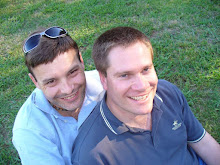Our day began with a rooftop breakfast at our Riad hotel. Temperatures hovered around 10C until the sun finally rose shortly after 8:30am. Our stop of the day was Le Jardin Secret (translated as the Secret Garden). These immaculately landscaped gardens are a tranquil oasis amid the souks, surrounded by high walls. They’re the last vestiges of a monumental palace complex built in the late 16th Century.
Water is a fundamental element in all Arab-Muslim gardens. The focal point of the garden is normally a fountain, fed by gravity, while the garden itself is laid out in four quadrants symbolising paradise. The Quran describes the universe as composed of four parts divided by rivers. As a result, in an Islamic garden, you'll typically find four dividing water channels that symbolize the four rivers of paradise. In Le Jardin Secret the four quadrants meet under a pagoda that shelters a simple marble fountain consisting of a marble sphere.
Today you can see the small building standing free in a walled pit. We decided the entry fee was rather steep, so we paused to admire it from the street level before moving on to the Ben Youssef Madrasa. This spectacular complex, built in the 16th Century was once an Islamic College. In its day it was one of the largest in Northern Africa, housing up to 900 students at its peak. However, students would have endured incredibly cramped conditions as the complex contains just 130 tiny cubicle bedrooms built on two levels around a central courtyard.
The complex was renovated and opened to the public in 1982. Its central courtyard is simply stunning. The open space is surrounded by ornately decorated marble walls, tiled pillars, and carved cedar archways. Throughout the building, tiles are laid out in geometric patterns or bear inscriptions, mostly phrases from the Quran. A rectangular pool stands in the centre for ablutions, which are required before entering the spectacular prayer room at the far end of the yard. The prayer room, clad in ornately patterned white tiles and marble, was a genuine highlight.
We explored the madrasa for several hours, then returned to the souks to wander for another hour or two. The chaos and sights were extraordinary, frequently changing as the rhythm of the day unfolded. For example, donkey carts were visible everywhere in the early morning. They're used to haul building materials and bulk goods through the narrow streets before the markets open. Then as the pedestrian traffic builds, stalls set out their wares, then close again for midday prayer and so on.
The quake was the biggest to hit Morocco since 1960. It caused widespread damage in the High Atlas Mountains and Marrakesh. Repairs are still in full swing. We encountered numerous buildings with cracked or broken walls as we wandered through the medina. We also came across large wooden struts holding frail walls in place.
The Bahia Palace is renowned for its iconic blue tile-trimmed central courtyard. However, during our visit much of it was shrouded in scaffolding. However, its rooms and restored ceilings were almost as dazzling. You can see some of these above. After a long day of walking, we returned to our Riad to freshen up, then ventured back into Jemma el-Fnaa for dinner.
We stopped for a morning coffee on an elevated terrace above the Islamic garden before making our way through the medina to Almoravid Koubba. Many of the old city’s buildings are adobe constructions. As a result, there aren’t many buildings that survive the centuries in good condition. Almoravid Koubba is said to be one of the oldest buildings in Marrakesh. Surprisingly, it remained largely hidden until excavations were made by the neighbouring Ben Youssef Mosque in 1948.
The complex was renovated and opened to the public in 1982. Its central courtyard is simply stunning. The open space is surrounded by ornately decorated marble walls, tiled pillars, and carved cedar archways. Throughout the building, tiles are laid out in geometric patterns or bear inscriptions, mostly phrases from the Quran. A rectangular pool stands in the centre for ablutions, which are required before entering the spectacular prayer room at the far end of the yard. The prayer room, clad in ornately patterned white tiles and marble, was a genuine highlight.
Eventually, we stumbled across Shtatto Marrakech, a rooftop restaurant in the middle of the medina. We stopped for late lunch enjoying the winter sunshine and soaking in a chaotic landscape of roofs and minarets. It was a refreshing sanity break from all the hustle and bustle of the medina below. We vowed to return again before leaving Marrakesh.
We finished our walking tour of the medina with a side trip to Bahia Palace, a 19th-century complex that’s considered one of the city’s architectural marvels. Sadly, the palace was badly damaged by a 6.8 magnitude earthquake that struck the city on 8 September 2023.
The quake was the biggest to hit Morocco since 1960. It caused widespread damage in the High Atlas Mountains and Marrakesh. Repairs are still in full swing. We encountered numerous buildings with cracked or broken walls as we wandered through the medina. We also came across large wooden struts holding frail walls in place.
We decided to take our lives into our own hands and dined at one of the many food stalls that come to life after dark. Our meal finished with an impromptu musical performance by the kitchen staff. I was a little nervous about eating in the market. We were scheduled to drive through the Atlas Mountains early the next morning so we couldn't afford to get sick. Each stall displays its raw meat on a sloping, open-air platform. Not exactly the most hygienic display. I’m pleased to say we survived the meal without incident.
You can read about our two-day private tour of the Altas Mountains here.
You can read about our two-day private tour of the Altas Mountains here.




































No comments:
Post a Comment